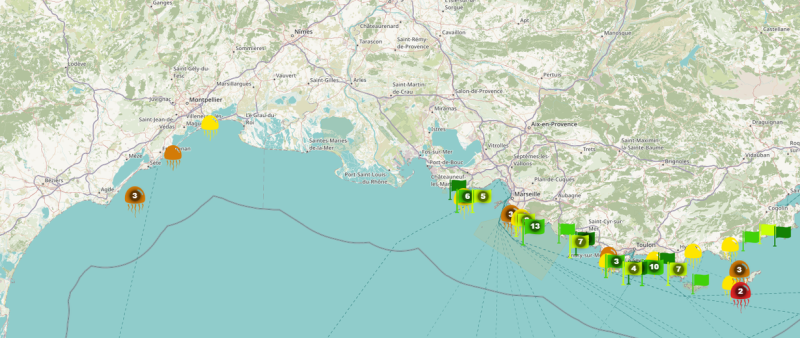Are there jellyfish where you are going to swim ? Discover the map to choose your beach and avoid stings

The participatory map allows you to know where the jellyfish were reported and when. Pixabay/capture
What a bad surprise to plan a beach trip, and to discover, once there, that the jellyfish are out. In order to help tourists or locals along the coast, but also for scientific purposes, a participatory online map now allows reports to be made.
Jellyfish can easily spoil your trip to the sea. With their unpleasant stings, it is best to avoid them. So, to make life easier for swimmers, but also to provide valuable data to researchers, the participatory map méduse.acri was created.
The concept is simple, Internet users can report the presence or absence of these animals and consult the map to find out the latest reports on a specific location.“The data provided will then be used for scientific purposes to better understand the conditions of appearance and movement of jellyfish”, the site specifies. To open the map, click on the screenshot below.

Click to access the map. Méduse.acri
It must be said that the presence of jellyfish is very variable. “They are affected by winds and currents and they run aground on the coasts”, explains Antoine Troullier, the engineer behind the map, interviewed by BFM Côte d'Azur.
Observations all year round
However, it is still impossible for scientists to precisely predict the presence of jellyfish in a given location, "because there are many& ;nbsp;too many micro-phenomena which each have an essential influence", indicates the site which hosts the participatory map.
Remains that prevention combined with data collection is a winning combination, on the one hand for researchers, since the site receives "some days nearly 200 observations, for peaks which exceed 15,000 consultations per day, over a coastal strip of several hundred kilometers, and we record observations all year round, almost every day".
To know the presence of jellyfish in the area that interests you, simply move around the map and click on the symbols. If there is a green flag, it means that an absence of jellyfish has been reported, a jellyfish symbol is equivalent to a presence, and the color corresponds to the date. Then simply click on the jellyfish to find out the quantity observed and the precise geolocation. Users can even enter additional data, like species and weather conditions.




